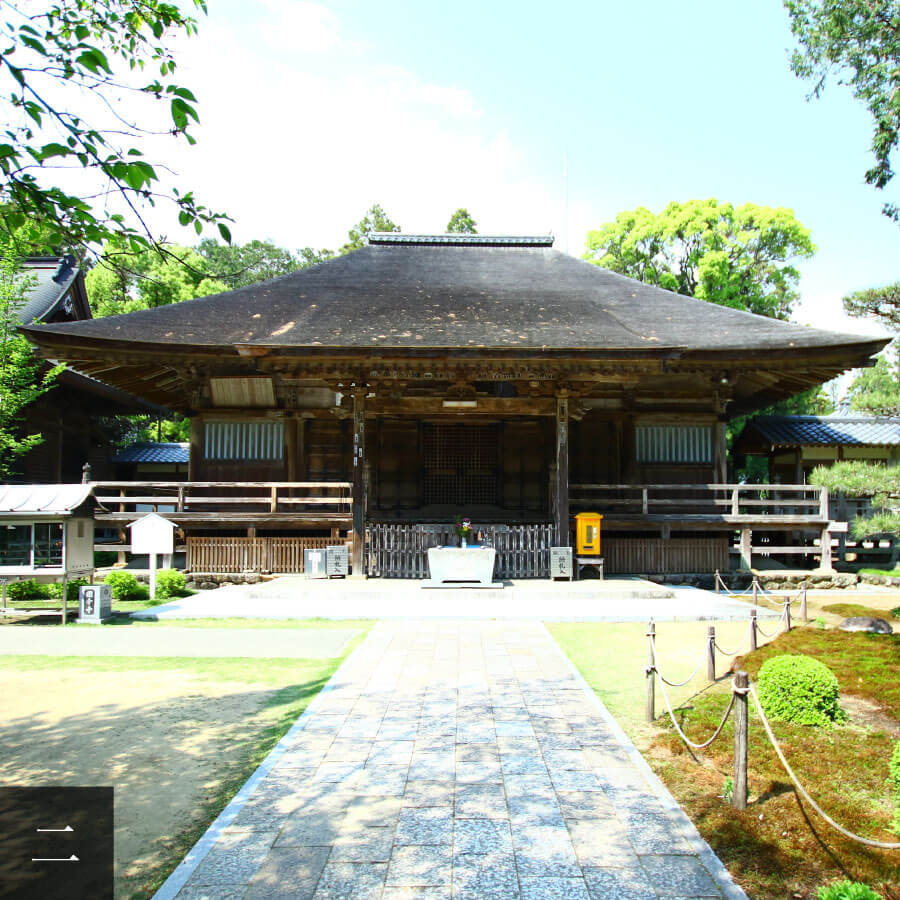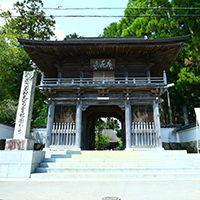【Pilgrim’s Song】
The temple that divides the country and piles treasure
What is stored remains if you go to the end of the world

Image 1 is a statue of a wooden medicine Buddha Nyorai. Other cultural assets include a half bell.

The appearance is simple, but it has an elegant and quiet elegance. * Image 2
History and origin of Kokubunji
Speaking of Tosa Kokubunji, the mid-Heian period poet Kinukiyuki (c. 868-945) comes to mind. The Tosa Diary written by Nukiyuki is particularly famous for being a kana diary written in a woman’s brush, and the provincial governor’s official office where Nukiyuki stayed for four years as a priest was about 1 km northeast of Kokubunji. It was called “Kokubunji tomodomo Tosa no ma horoba” and was the political, economic and cultural center of Tosa.
Emperor Shoumu (reigned 724-49) transcribed and delivered the “Golden Light Sutra” and built Kokubunji in 68 locations nationwide around the 13the year of the Tenpyō era. In Tosa, Gyoki Bodhisattva opened it as a place for prayer for the peace of the world, Taiping, the harvest of five grains, and the enrichment of all. Respect for the Emperor was great and he was blessed.
According to Engi, Kobo Daishi travelled around the area around 815, the 6th year of the Kōnin era, when he engraved the Bishamon deity and placed it in the Okunoin. At that time, in the main hall, he was trained in the “Hoshi Kyou no Hihou” (Secrets of the Stars), which is an exorcism study to ward off evil that was inherited by Shingon Yaso. Since then, Tosa Kokubunji has become the “Hoshi no Konpon Dojo” (Foundational Study of Stars).
According to Engi, Kobo Daishi travelled around the area around 815, the 6th year of the Kōnin era, when he engraved the Bishamon deity and placed it in the Okunoin. At that time, in the main hall, he was trained in the “Hoshi Kyou no Hihou” (Secrets of the Stars), which is an exorcism study to ward off evil that was inherited by Shingon Yaso. Since then, Tosa Kokubunji has become the “Hoshi no Konpon Dojo” (Foundational Study of Stars).
Currently designated as an important cultural property of the country. In addition, Nioumon was built in 1655 in the first year of the Meiji era with the donation of Tosa’s second generation lord, Tadayoshi Yamauchi, and the current Niomon was rebuilt at the beginning of the Showa era and has a two-layer structure. The entire grounds of the 1250-year-old temple is designated as a national historic site.
The highlights of Kokubunji
Nationally designated cultural property, gold temple, garden, monument (backing the main hall, cherry blossoms and peony in spring, hydrangea in early summer, persimmon in autumn, a peaceful approach to the heart, and the foundation stone of the seven-storied pagoda at the time A beautiful garden of cedar moss, a monument of Takako Kyoko’s five girls, Haruko Takagi, eldest son, Toshio, grandson, Atsuko Inabata, etc. (Discovered by excavation in 1977)
Annual events at Kokubunji
- Setsubun star festival
- Date: February 3
- Flower Festival
- Date: Old April 8
- Seventeenth Night Festival (Obon General Service)
- Date: Old July 17
- Mikage
- Date: 21st of every month
- Immobility
- Date: 28th of every month
- New Year’s Eve night bell
- Date: December 31
Temple 29 Fudasho: Manizan Houzouin Kokubunji
- Denomination
- Shingon Sochiyama School
- Honzon
- Senju Kanzeon
- Pioneer
- Gyoki
- Founding
- Tenpyō era year 13, 741
- Mantra
- On bazara tarama kiraku
Access
- Location
- 546 Kokubu, Nankoku, Kochi 783-0053
- Tel
- 088-862-0055
- Parking
- Normal / 45 cars, Large / 5 cars (free)
- Shukubo
(TempleLodging) - None
- Website
- http://www.tosakokubunji.org/
From the Nankoku Interchange, take National Route 32 towards the southern country. After about 2km, turn right at the bus stop Kokubunji Street and after about 400m you will see it on your right.
⇒ Google map

